- Parking:
- Launching
- Difficulty – Squamish is famous for its winds, which can significantly increase the difficulty. On rare days with minimal winds, it’s a low-intermediate paddle with gentle but noticeable current in the river. Look up the tide chart as well.
- Boat traffic – minimal, we did not encounter a single boat in the estuary on this December weekend
- View – fantastic views of snow-capped mountain peaks, the magestic
Stawamus Chief, varied paddle routes through side channels, waterfalls, geologically interesting volcanic formations, and steep cliffs of Howe Sound - Facilities – stop in Squamish for food and washrooms before getting onto Spit Road, as there’s no toilet or any service on this gravel road. Good cellphone signal coverage.
- Overall score – 9/10
It’s been 4 years since I last visited Squamish by paddleboard and explored a little bit of northen Howe Sound. This time, I came to explore the famed Squamish River Estuary with a different group of paddling friends, led again by Howard.
Spit Road underwent extensive deconstruction between 2019 to 2023 to remove about 850m from the berm and restore the estuary habitat, so it was intermittently closed in the last few years. As of the fall of 2024, the road is again open to traffic (but Google Maps doesn’t seem to know it yet, so navigate to this point and continue south).
Spit Road is littered with shallow potholes, but with a little care it doesn’t pose much of a challenge.

We parked at a pullout area and followed a small trail to launch west of the spit onto Squamish River.


It’s flowing gently at about 2km/h, strong enough to feel the push but not so strong that we couldn’t paddle against it.
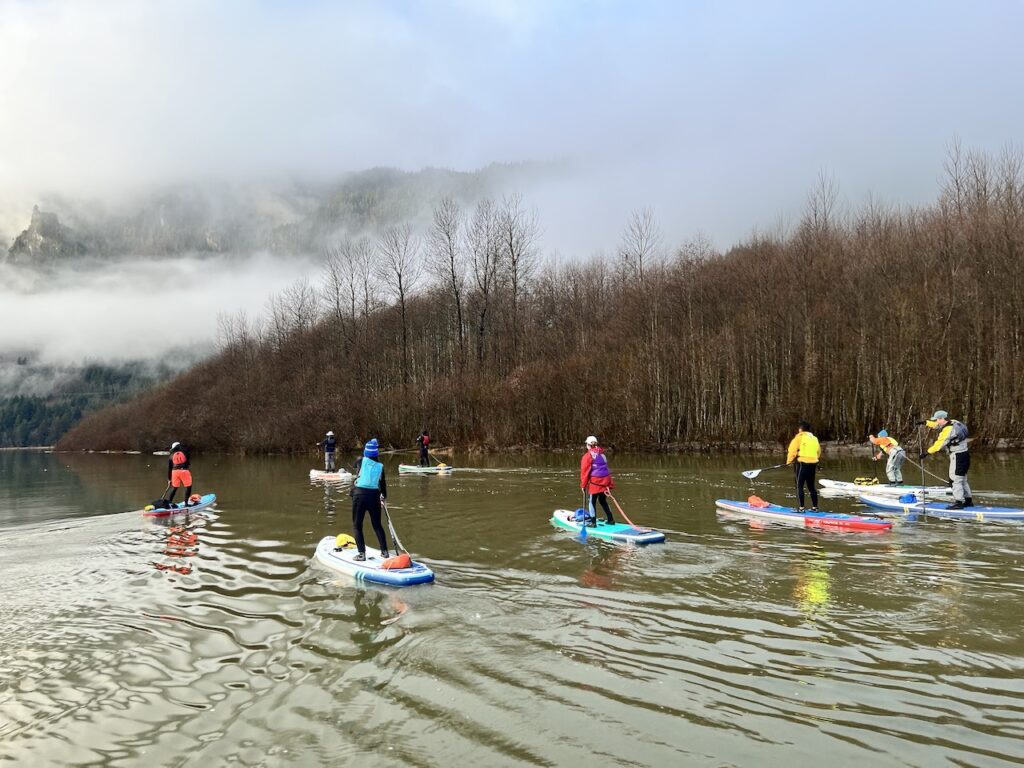
Our wonderful guide Howard pointed out the cool-looking “Castle Rock” on the other side of Squamish River, which is formed vertically by lava being pushed upwards. The clouds perfectly framed the Castle and reminded me of Castle in the Sky by Studio Ghibli.
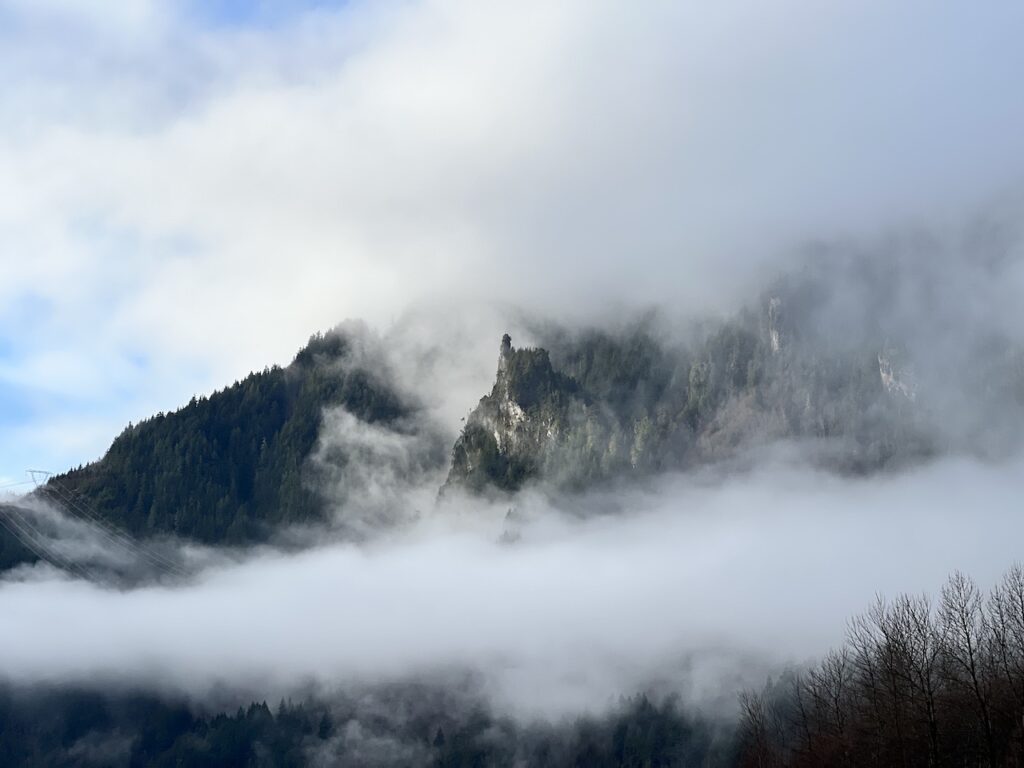
We crossed the Squamish River and explored a side channel.
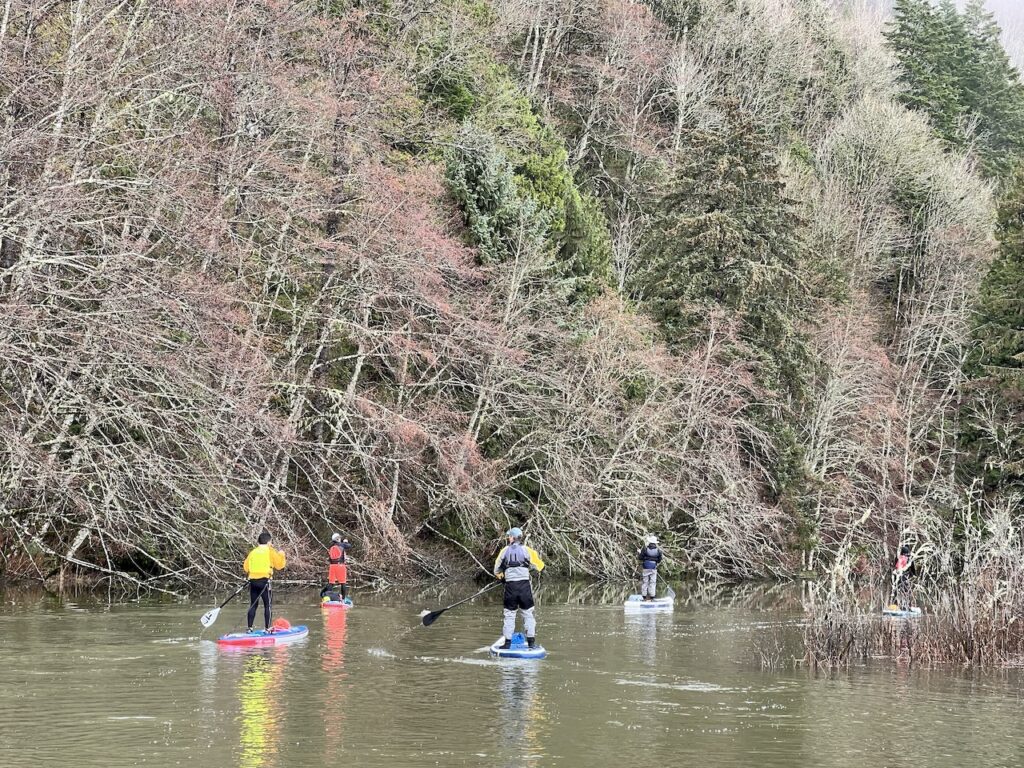
Howard spotted a cave and went to explore. Turns out it’s a neat little basalt cave — another evidence of the area’s volcanic activities. (The GPS coordinates: 49°42’13.0″N 123°11’08.2″W). Too bad there are no known hotsprings around Squamish.
To get there, we had to land on a small river bank and hike through about 50m of wet marsh.
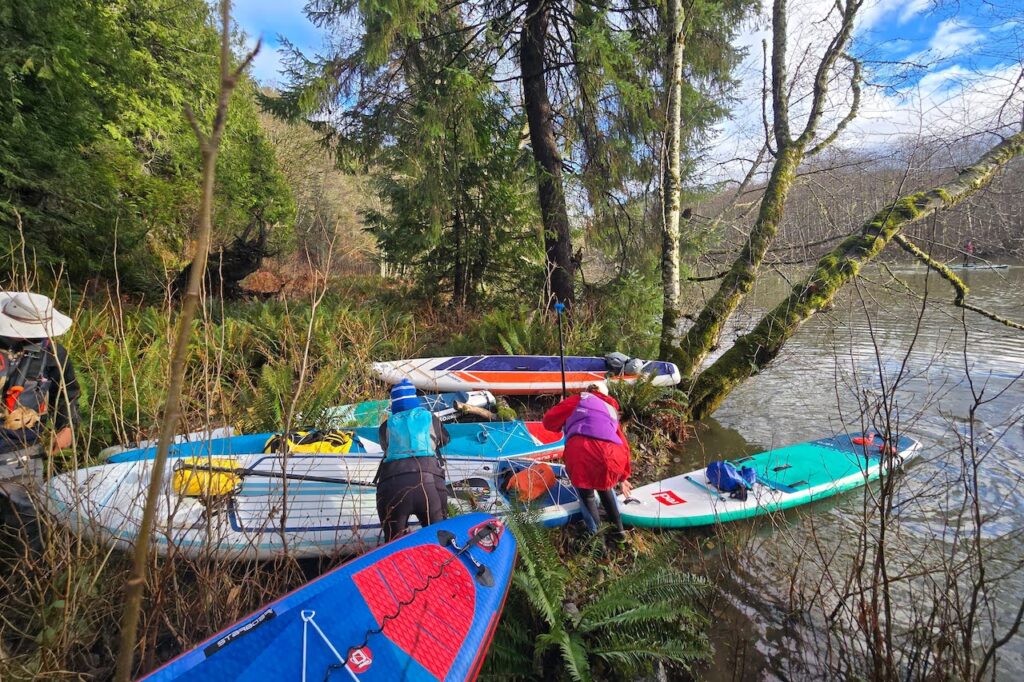
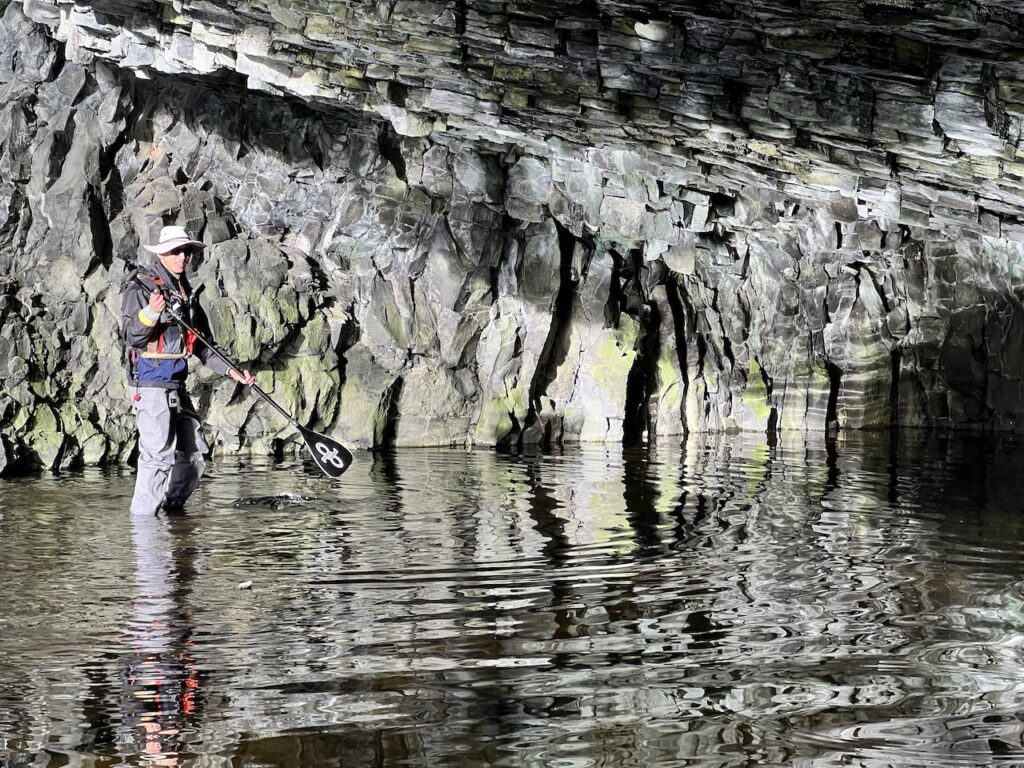
A word of caution: the basalt rock formation is unstable, and there were chunks of rocks fallen from above over time. Explore at your own risk, and I wouldn’t linger here too long especially when the temperature hovers around freezing and the water goes through freeze-thaw cycles.
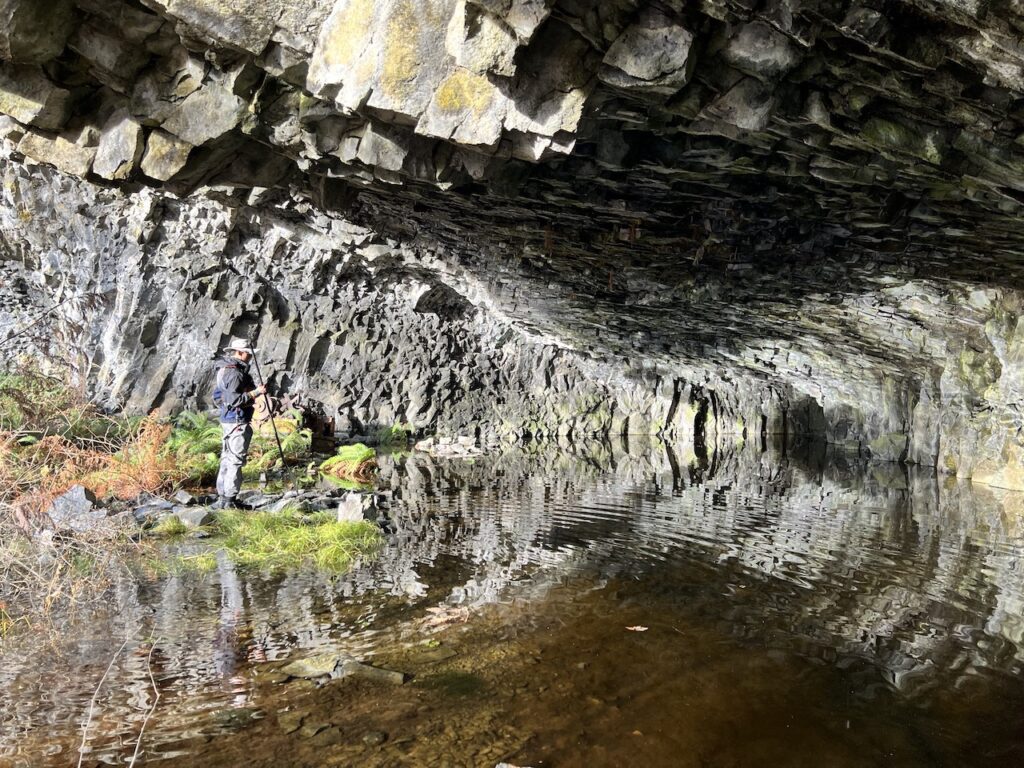
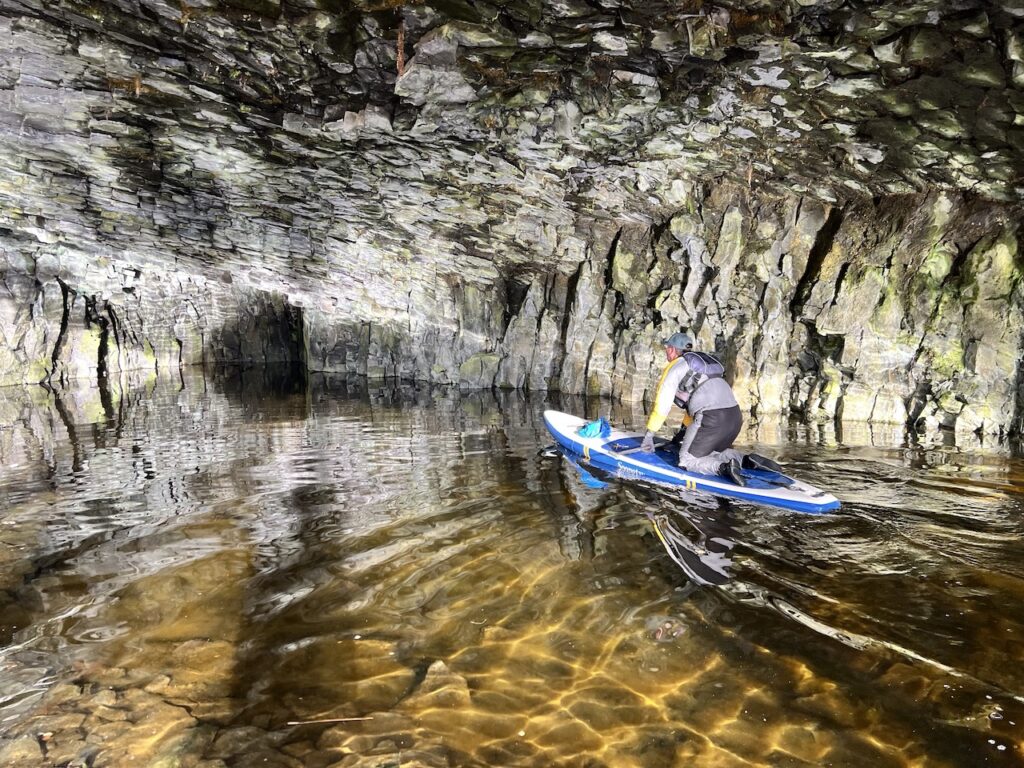
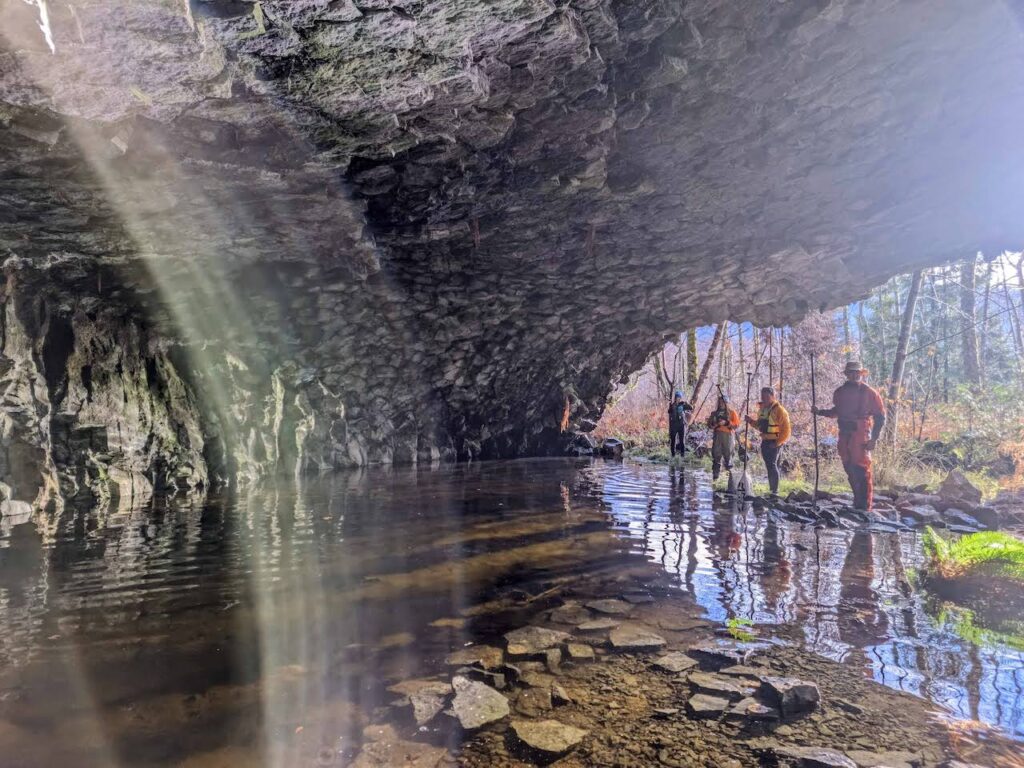
Thanks to Bob who went through the trouble of taking his paddleboard to the cave, I got a souvenir photo.
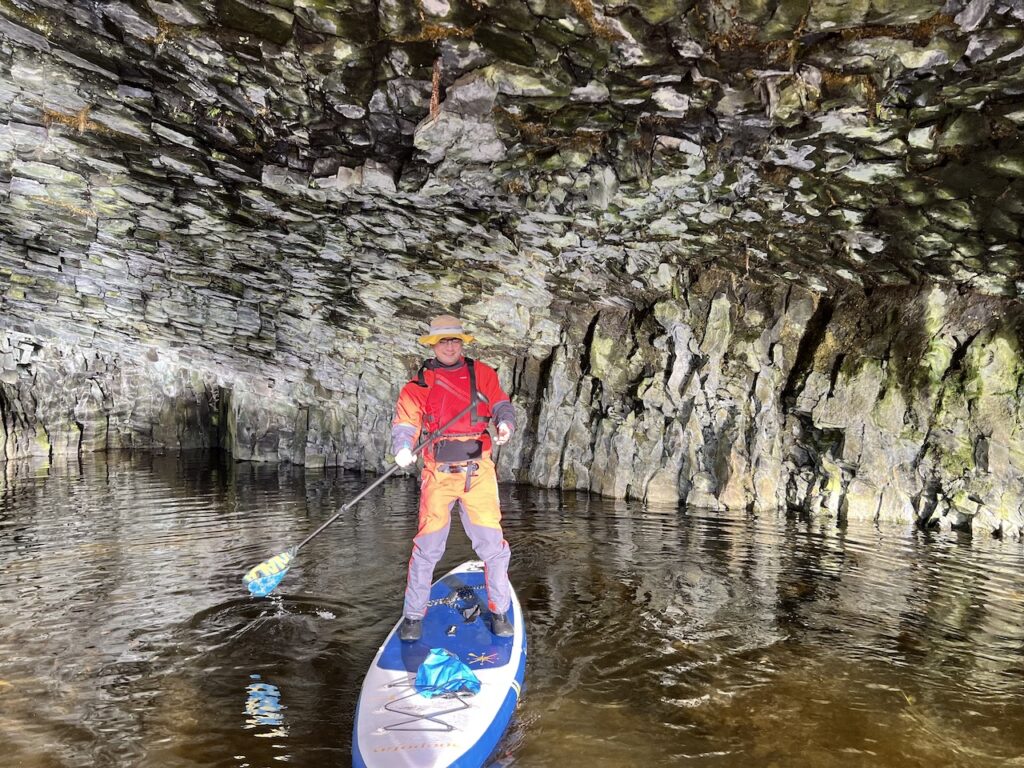
We followed the river down to Howe Sound, taking in the views of the Chief.
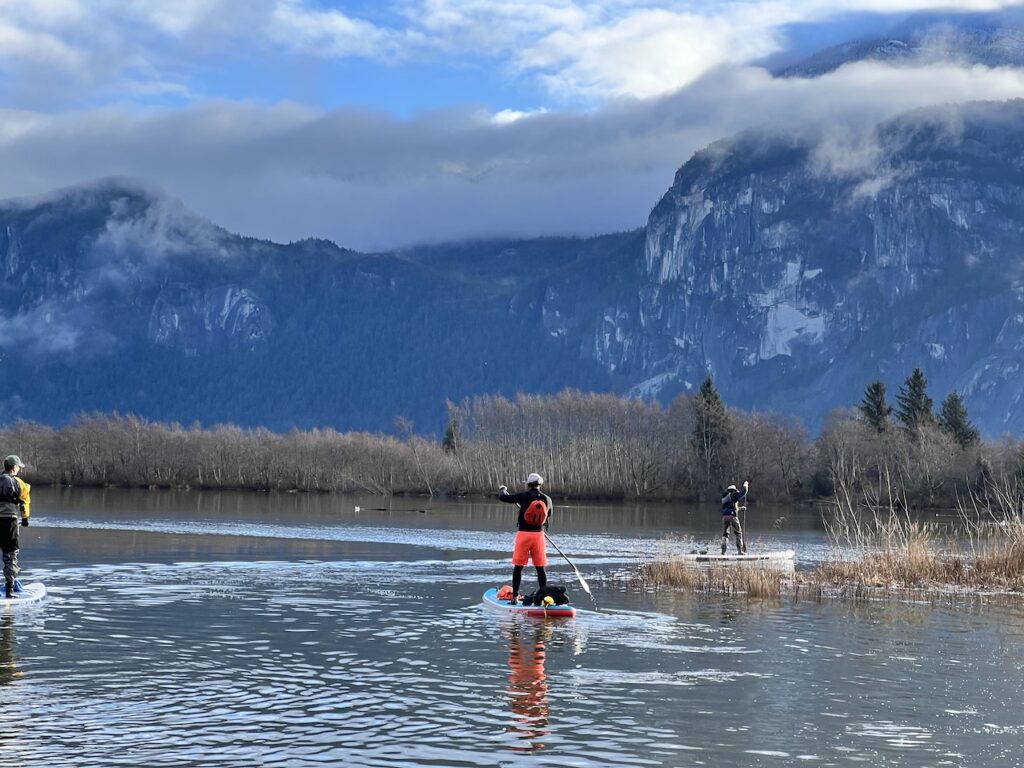
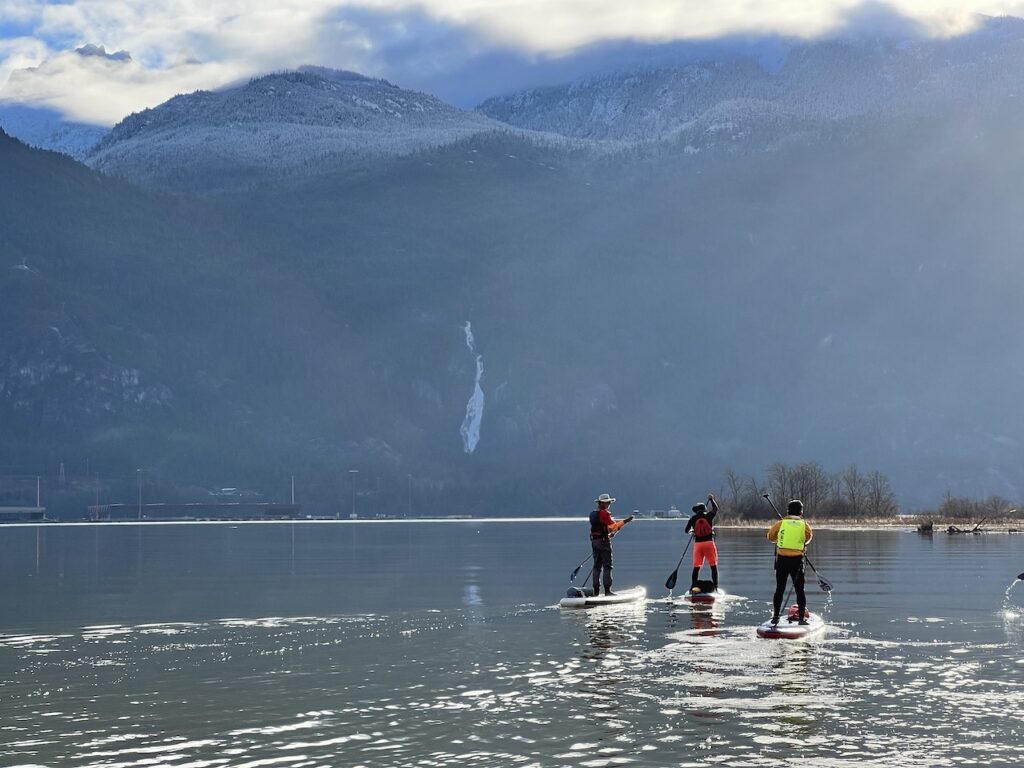
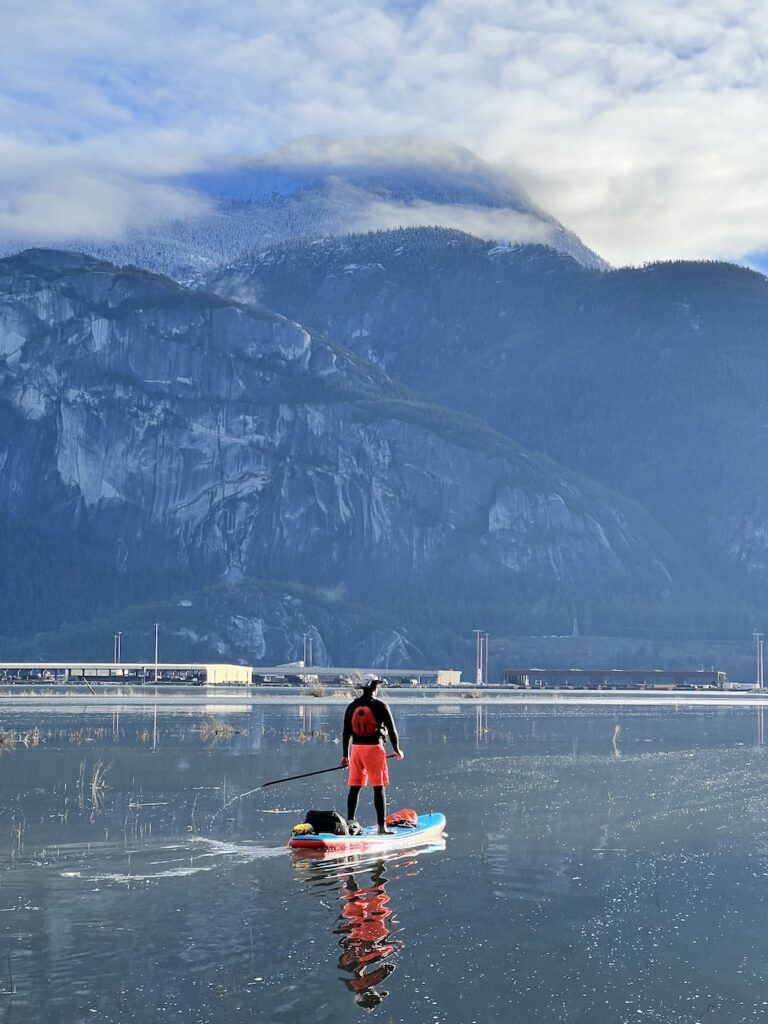
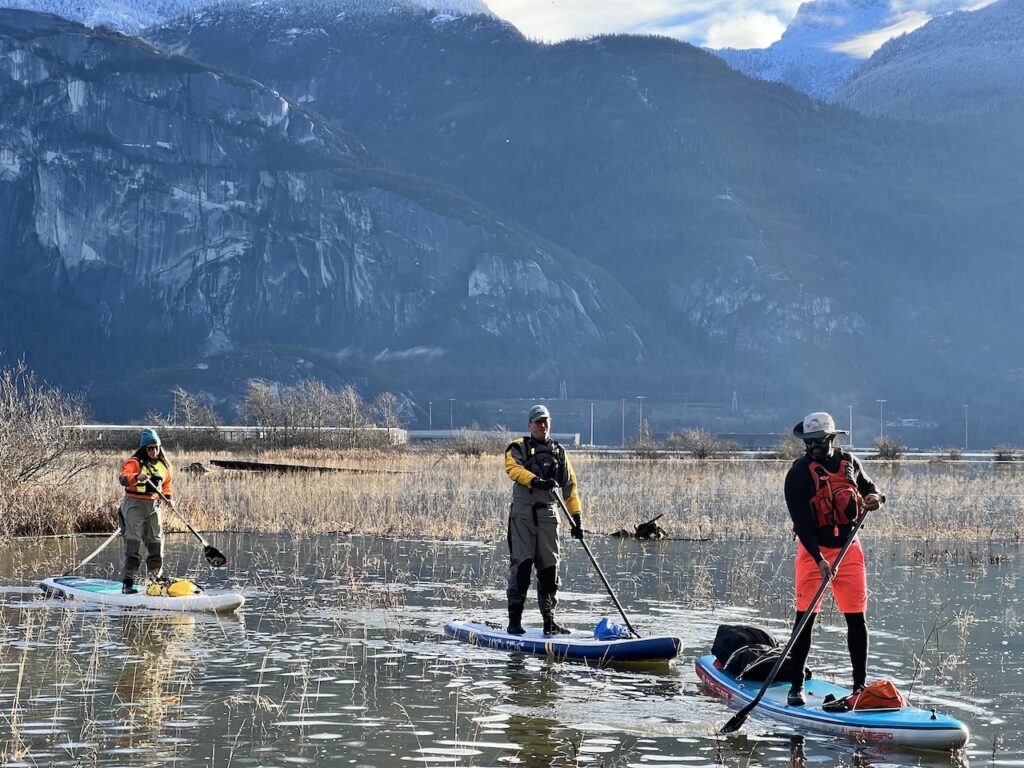
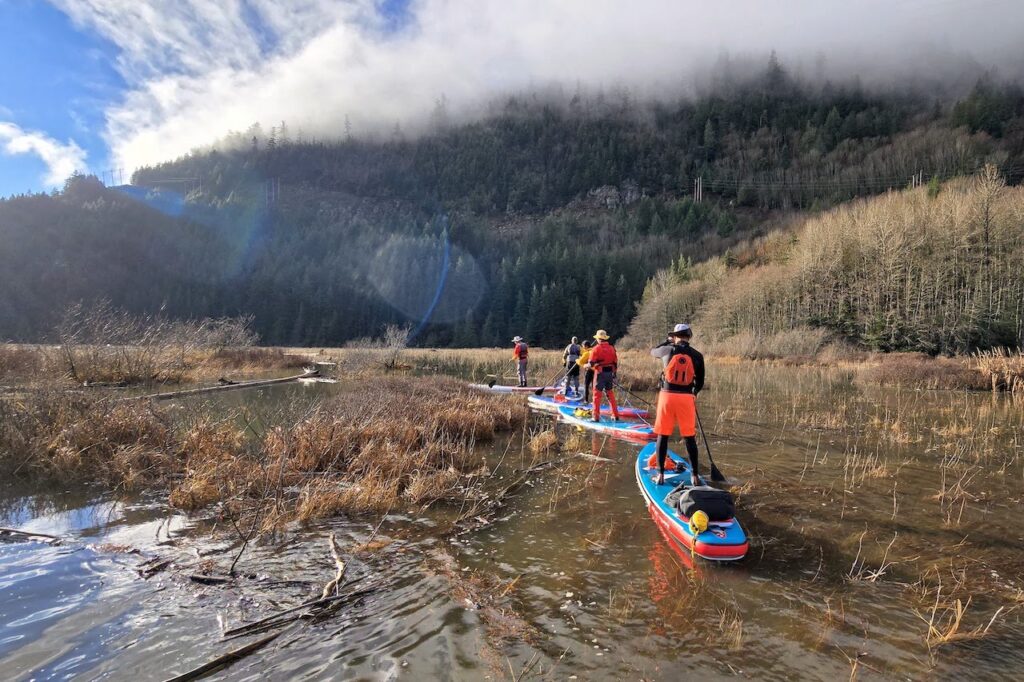
We left the estuary behind briefly and visited the cliff faces along Howe Sound. We found a nice spot to take a lunch break under a pair of waterfalls and shelter from the increasing northerly winds.
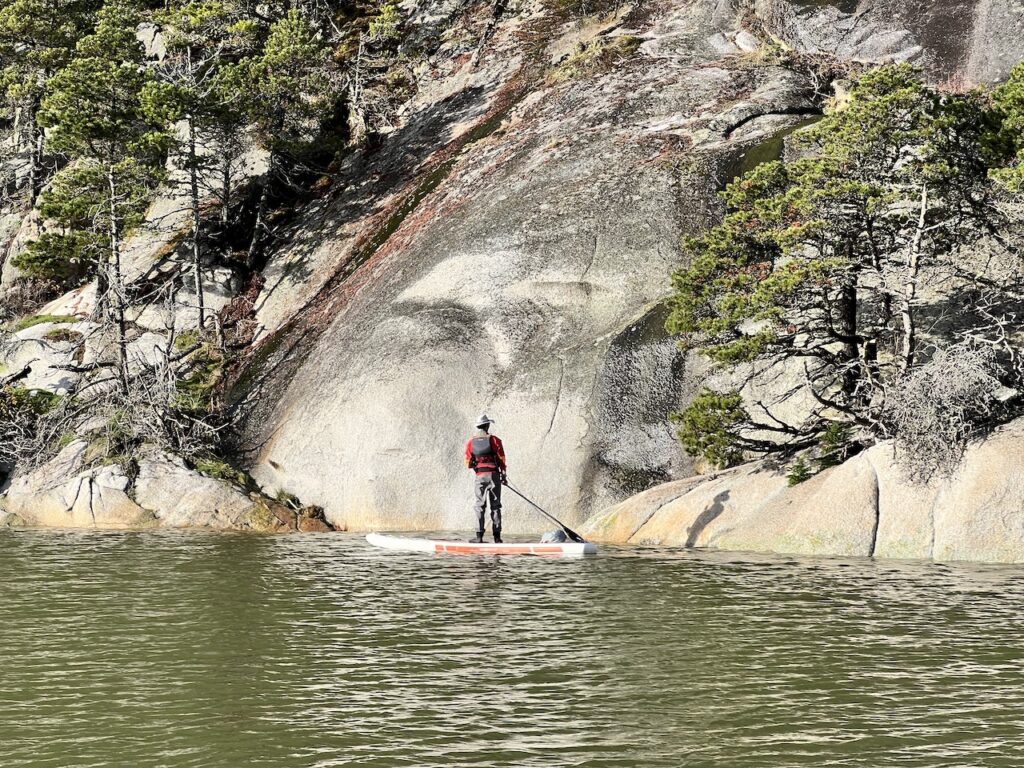
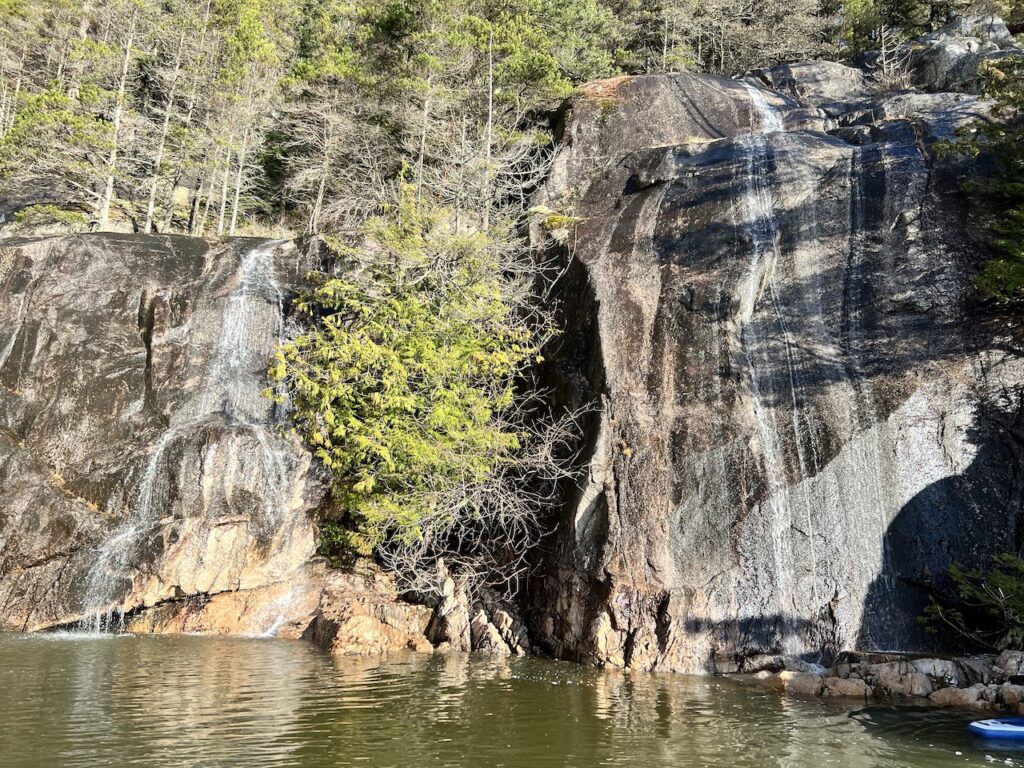

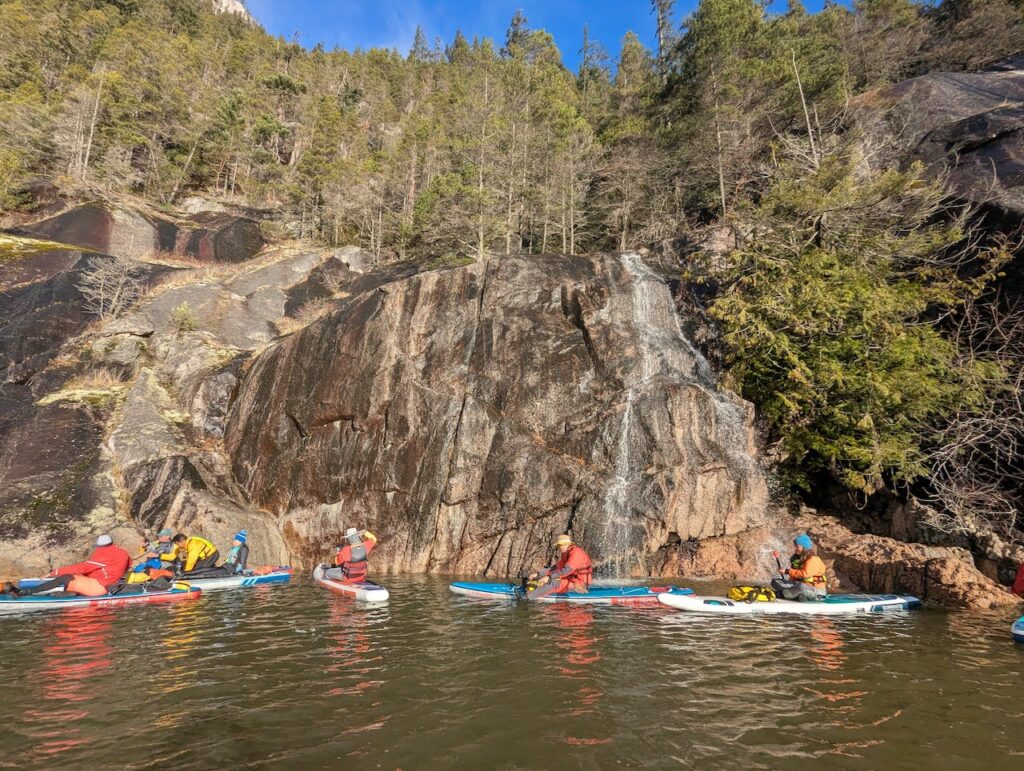
We waited a little bit for the southerly thermal winds to kick in to help us make our way back north, but had to get going due to time constraints. The group handled the triple whammy of headwinds, river flow, and outgoing tides very well, but a beginner might have found this challenging even on this carefully chosen fair-weather day.
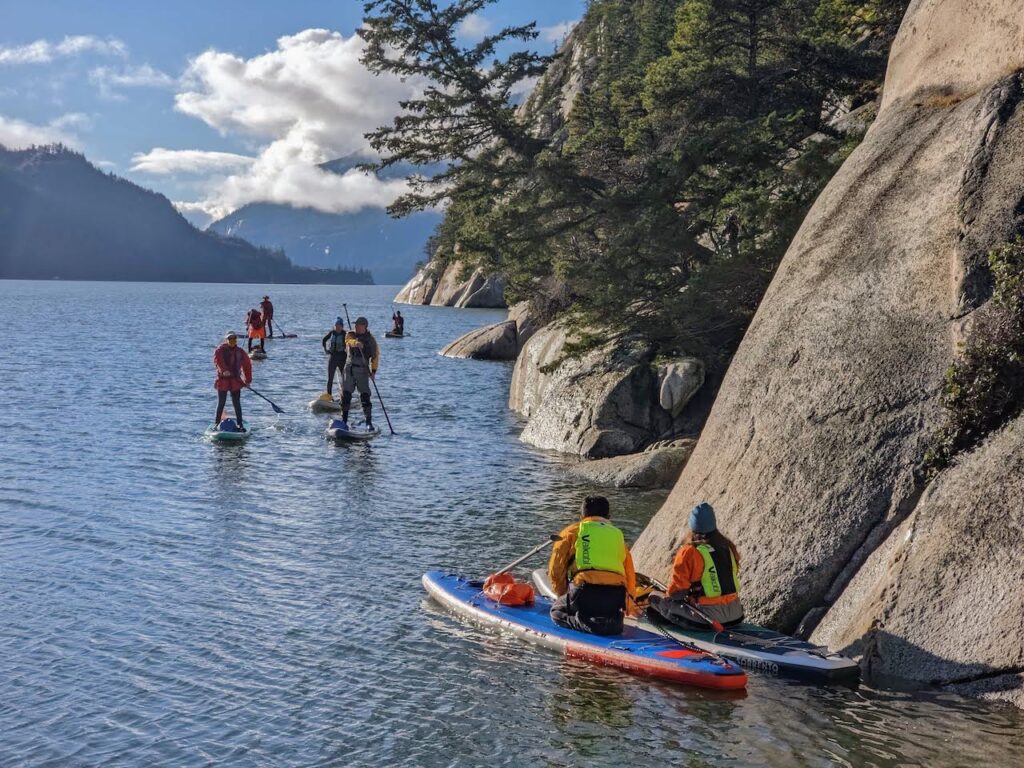
We crossed the mouth of the river and went inside the blind channel for a little more exploration. The narrow side channels reminded us of the River of Golden Dreams at Whistler, but frankly the views on the Squamish River were a lot better.
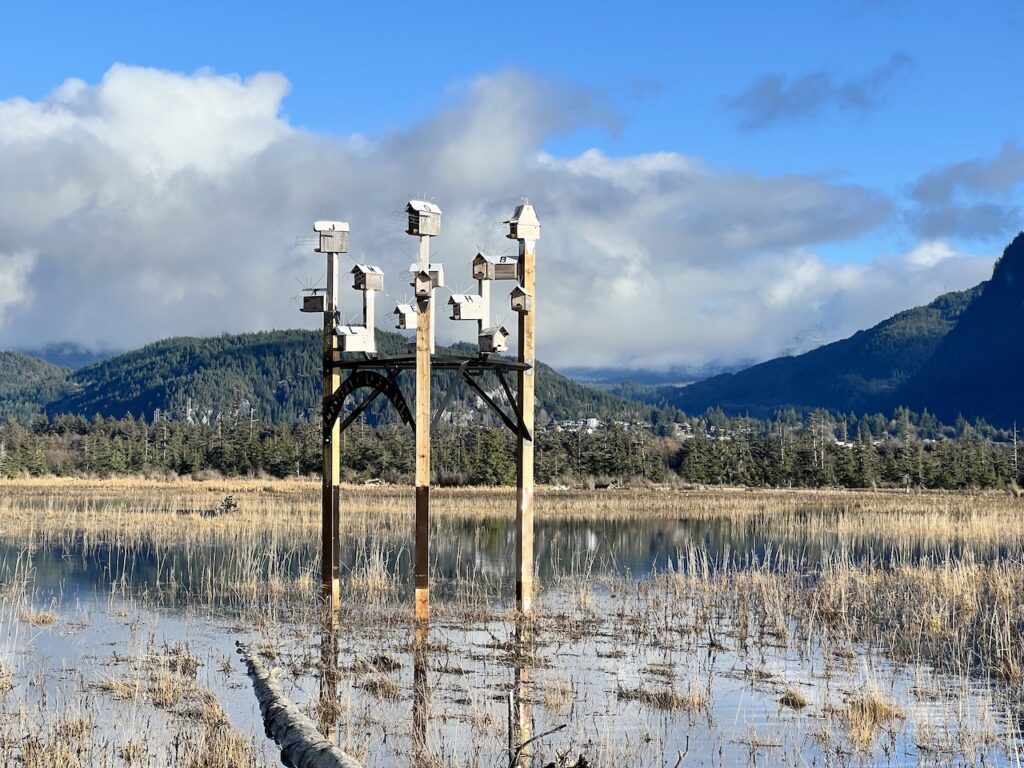
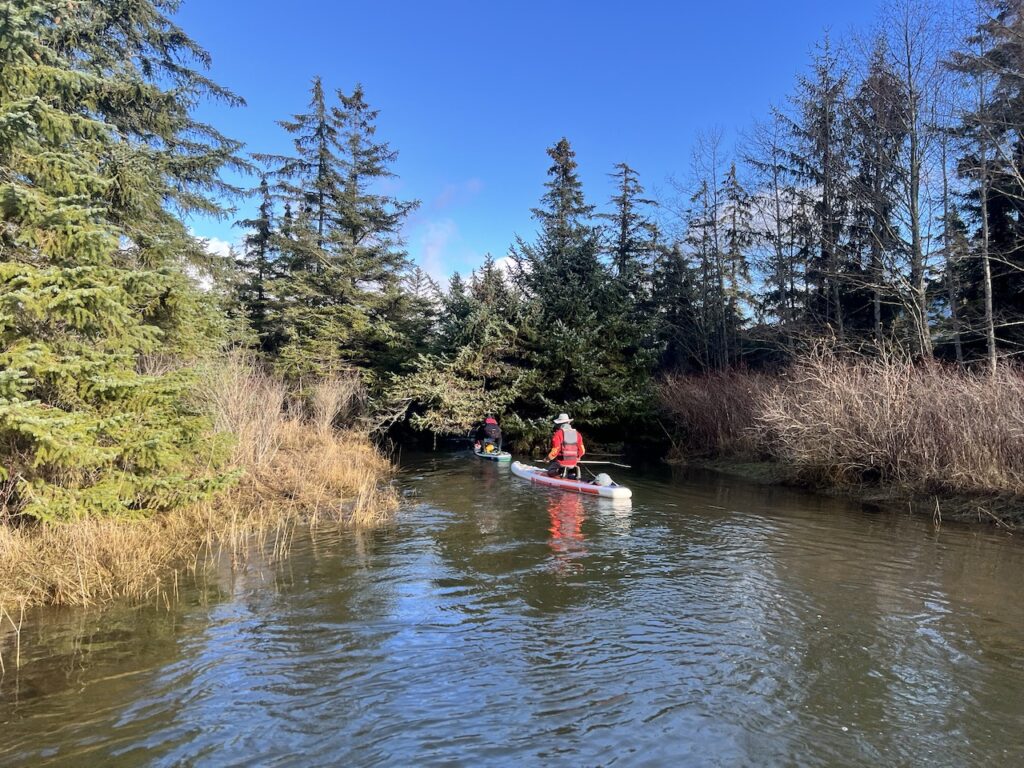
One of the channels was quite overgrown so we had to crouch down to get through. With the current pushing from the back, it took some needle threading skill to get 9 boards through without anyone getting seriously stuck.


After 5 hours of leisurely paddling, exploring, and generally relaxing, we finished the 11km paddle and pulled out from the east side of Spit Road. We saw a heron and some seals, but otherwise it’s a very quiet day on the water in terms of wildlife. Howard saw a pod of orcas in Howe Sound on a recent paddle, which would have a been epic.
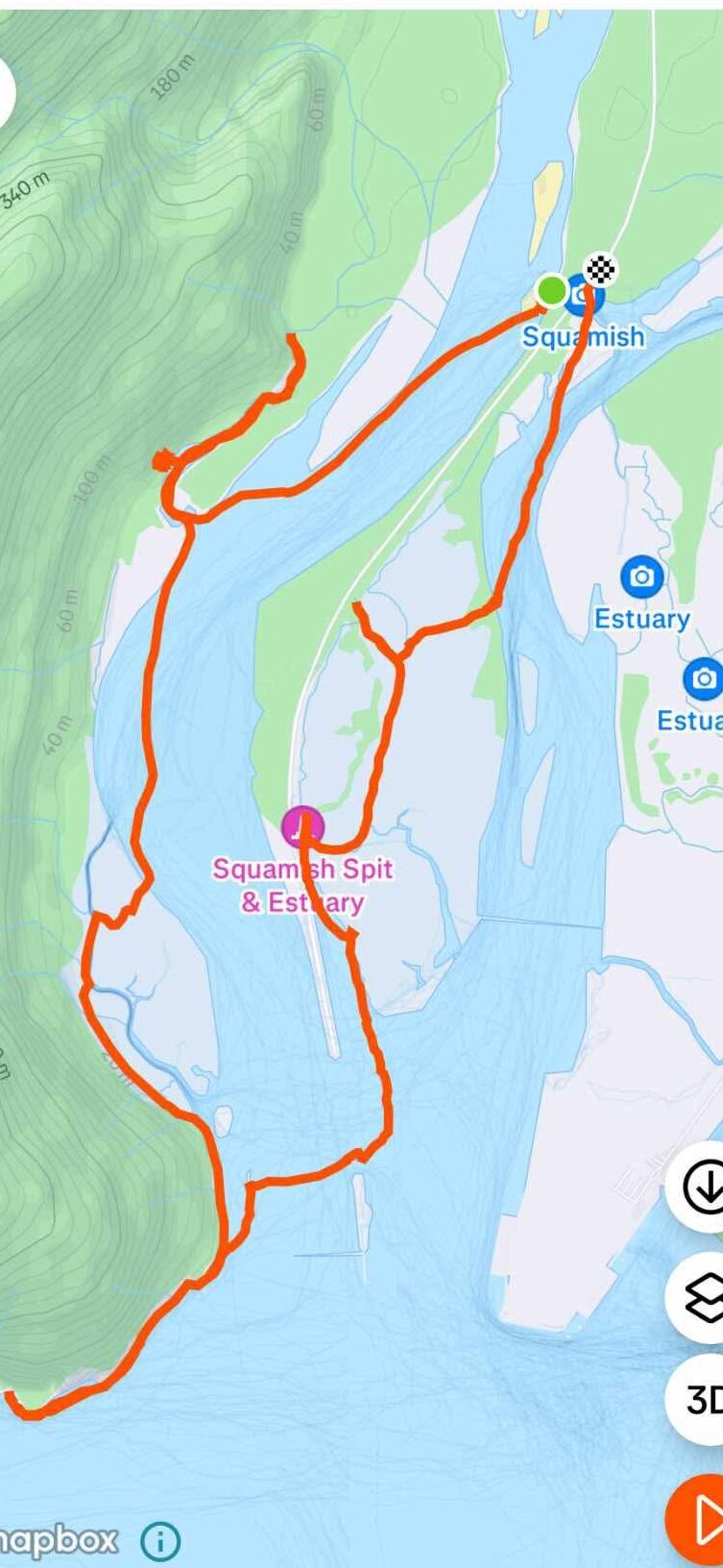
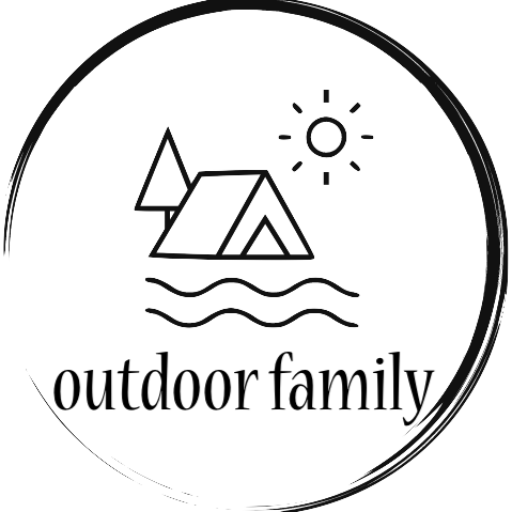
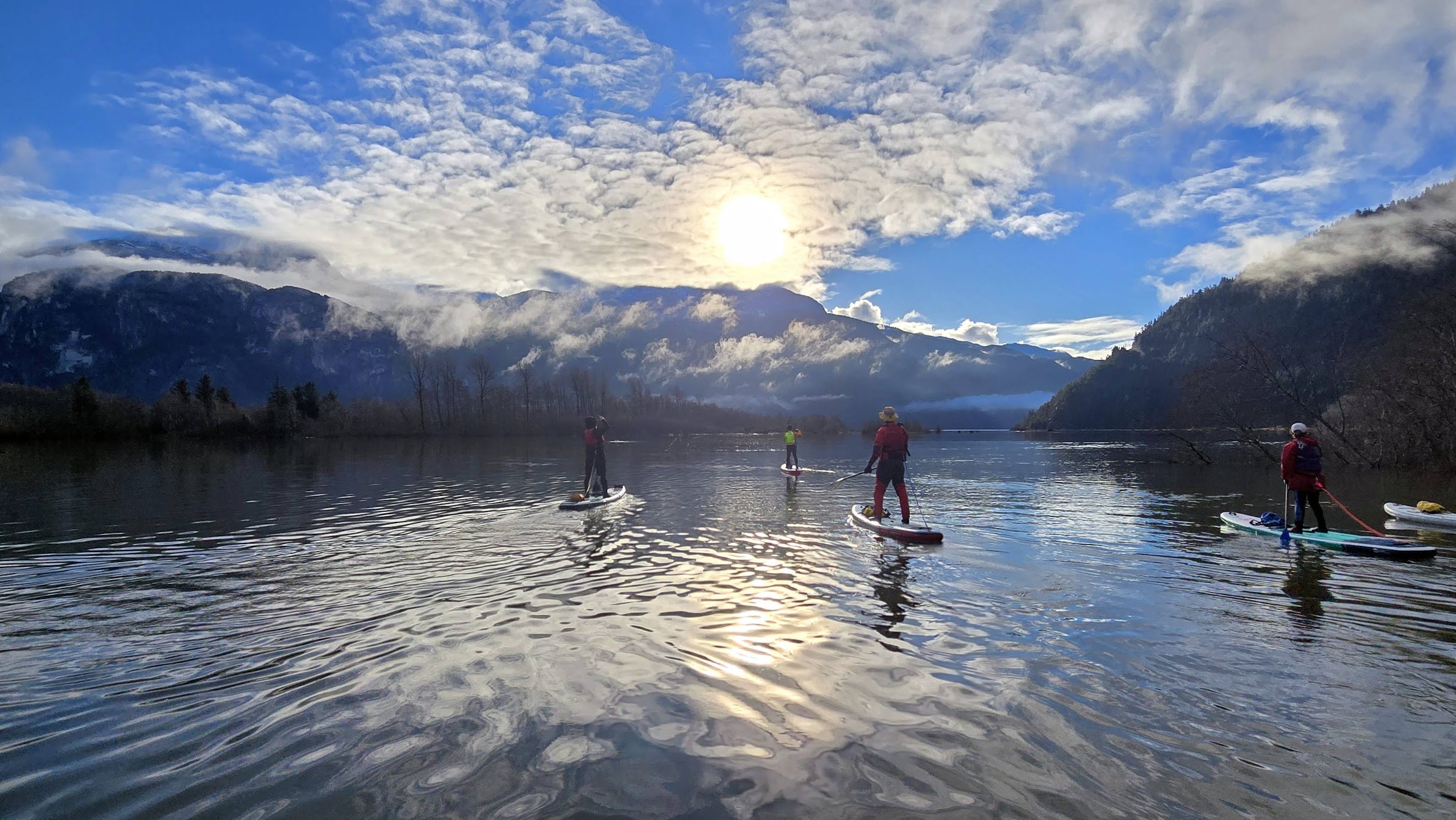
2 responses to “Squamish Estuary Paddle”
What an amazing day and exploration! Loved the cave find!
Thanks, friend! Happy paddling in the new year 🙂